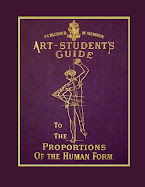
I found two references to Gottfried Schadow's teaching and writing.
The first is from History and bibliography of Artistic Anatomy By Boris Röhrl:
"During the first half of the century, lessons at the academies were organized according to French patterns but closer to the methods of the 18th century, thus more modern didactics could not have been understood, like the morphology of Gerdy which appeared in a German translation in 1830. The drawing of anatomical preparations and attending demonstrations in anatomical theatre were still compulsory. Artistic anatomy was a fixed part of the curriculum at the great academies in Munich, Dusseldorf, Berlin and Dresden, at which chairs for artistic anatomy were also founded. New books were mainly written by teachers at the institutes. Old fashioned ways of teaching, such as copying of anatomical patterns depicting single bones, were heavily attacked by adherents of the Romantic movement. Although the Romantics had censured the academies, their criticism was not targeted at a total abolition of the old system, but on an adjustment of lectures to a Western European level. From 1830 onwards, teaching methods began quickly to change towards a medical direction. The publication of teaching manuals was strongly encouraged, because it was hoped that Germany would overtake the French example and the predominance of French books - an attempt that never succeeded. One of the first remarkable German publications of the 19th century was initiated by the director of the Dusseldorf academy, Gottfried Schadow, who edited a folio sized atlas with figures from Albinus in 1830. His atlas on proportions, printed four years later, entitled Policlet, was more successful and was re-printed six times. Copies from this work are still used in modern anatomies. Schadow tried to reform the curriculum at the academy in Dusseldorf, which was later regarded as the leading German art school, around the middle of the century."
The second is from a Japanese site Studies in Western Art No. 2 - Special Issue: Art Academies:
Miyuki Ozeki
The History of the Kuenigliche Akademie der Kuenste zu Berlin
"The Royal Academy of the Arts in Berlin was, in 1696, the third public art academy to be founded in Europe, after Rome and Paris. However throughout the 18th century it was no more than a small private school of little importance. Only after two reforms executed about 1800 was it enlivened and reborn as the most modern institution for art education in German-speaking countries. While the first refom since 1786 was led by the teachers and concerned the methodology of teaching art based on neo-classical aesthetics, the second reform of 1809 was instigated by ministers and aimed at reorganizing the whole cultural administration in Prussia. With the foundation of a ministry for culture the academy achieved its independence from the unstable patronage of the monarchy, enabling its continuous development under the initiative of the director Gottfried Schadow. But its mechanical and overloaded teaching curriculum gradually estranged its pupils . By introducing a "Meisterklasse (master course)" at the Duesseldorfer academy Wilhelm Schadow extended the horizon of art education. However, he simultaneously disclosed its duality : Is art democratic enough to be achieved by the educational systems offered by the art schools? Or does art only derive from the genius of an individual person? The separation of the educational department from the Berliner academy in the year 1875, as a result of which the Hochschule der Kuenste was founded, symbolizes the contradictory task of an art academy which originally started as a liberal society of free artists and ended as an art school that regulated the artistic development of the individual."
Other posts about Gottfried Schadow.
















No comments:
Post a Comment